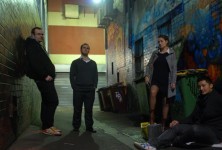Tech start-up MyCyberTwin named rising star at export awards – StartupSmart
Sydney-based tech start-up MyCyberTwin, which creates online virtual assistants, has won the Rising Star Award at the 2011 Australian Technology Showcase Patrons’ Awards in NSW.
Managed by NSW Trade & Investment, the awards are designed to showcase export performance by companies in the ATS program.
While MyCyberTwin won the Rising Star Award, the ATS Patrons’ Award for Outstanding Export Achievement went to OEM Technology Solutions, which focuses on rail technology.
Both companies receive $15,000 to further develop their international markets, in addition to commercialisation support from Invetech, PricewaterhouseCoopers and Spruson & Ferguson.
MyCyberTwin, founded by Liesl Capper and John Zakos, was launched in April 2007 after two years of planning.
The company is beginning to achieve export success with its virtual online assistants, which act as customer service agents on business websites and have the ability to converse with customers.
MyCyberTwin’s clients range from NASA and Hewlett Packard to NAB and PPL Media.
Capper and Zakos decided to start a business together in 2005, but spent half a year thinking of an idea before coming up with the concept for MyCyberTwin.
“Although we both had an interest in humanising technology, we asked themselves, ‘If this is such a good idea, why are chat robots not everywhere?’,” Capper told StartupSmart.
Capper and Zakos found most chat robots were too hard to build and maintain, inaccurate, and unable to handle complex queries.
“There was also very little merging of human sciences and computational intelligence. It is difficult to do but feasible, and we had done it before in our previous company,” Zakos says.
“Having realised that the limitation was technology, not market appetite, we set out to build not only the most advanced chat robots but also to make a platform that anyone could use.”
Because of Capper’s history in taking a previous IT company from R&D to listing, coupled with Zakos’ experience in artificial intelligence, the pair was able to win a government grant to fund proprietary product development and commercialisation.
They added their own capital and selected a handful of investors, and set to work.
The platform went live in early 2007. Since then, more than 40,000 personal and business users have made their own “chatbot”, without any software skills.
While the company’s R&D offices remain in Australia and the Asia-Pacific, it has set up its commercial headquarters in New York.
“We have remained focused on the high-end enterprise space, and on being the gold standard for intelligence and accuracy,” the founders say.
“Our dream is ubiquitous engagement with high-level artificially intelligent characters who improve the quality of human lives.”

